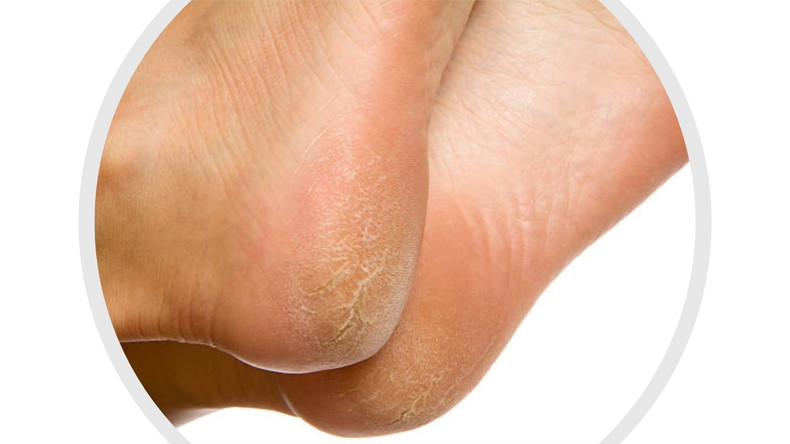A common condition faced by many persons with diabetes is dry skin. It is a condition that is relatively easy to treat once your treated for Diabetes.
Daily foot care is critical in the success of eradicating persistent dry crack heels. The foot and palms of hands has the five layers of skin cell production therefore are considered tough, rough or more protective then the skin on the rest of the body. This is a myth and the foot area on diabetic patients need constant care. Being motivated and diligent on foot care is essential in having a product that is effective and easy to use, and mobility/ accessibility to the feet are critical elements.
People with diabetes are prone to dry skin, particularly when blood glucose levels run high. This causes the body to lose fluids and skin to become dry. Dry skin can crack and itch, which can lead to infections. You may also get dry skin with diabetes if you have neuropathy. The nerves in the legs and feet may not get the message to sweat, which is necessary to keep skin soft and moist.
What is Dry Skin?
Rough, dry and scaly skin affects at least 75 percent of people with diabetes over the age of 64. Dry skin is aesthetically unappealing, uncomfortable, itchy, and can set the stage for eczema like outbreaks and other skin infections. Dry skin covered with scale may appear in a generalized pattern, or in localized round patches. In more severe cases, the skin loses its suppleness and cracks with erythema (redness or inflammation), becoming evident in and around the involved areas. Pruritus (itching), is the most prominent feature of this condition. Rubbing and scratching can aggravate dry skin, causing more itching and inflammation, and potentially leading to infection. Dry skin can be localized, such as on the legs, feet, hands and/or face, or it can progress to all the skin.
The Causes
Dry skin is usually caused in large part by environmental factors. Soaps, detergents, hot baths and showers remove the skin’s natural oils (sebum), and promote dry skin. When you run the water in your shower, keep the temperature cool to lukewarm. In addition, in people with diabetes, damage to small blood vessels and to small nerves may further promote dry skin and its complications.
It is important to treat dry skin because:
Treatment
Protected your hands by wearing gloves when using cleaning agents, solvents and other household detergents. A good skin tip is to blot yourself dry after showering, leaving some water on the skin. The Magnolia Body Balm, an emollient can then be applied to trap some of the moisture in the skin. Creams and lotions are generally preferred most by people, as they are less greasy and thus more cosmetically acceptable. If your looking to have a customized lotion for yourself then contact us at this link here.
The “diabetic foot” is a special case in point, very prone as it is to infection and ulceration. Roughness, dryness and fissuring require prompt treatment to avoid more serious consequences. A consistent regimen of Magnolia Body Balm preparations can be use daily which forces you to check your feet daily. Daily treatment of dry skin is a highly recommended, necessary, and cost-effective way of preventing further problems and complications.
Here are some other ways you can prevent skin problems with diabetes:
Don’t forget to share this post!

